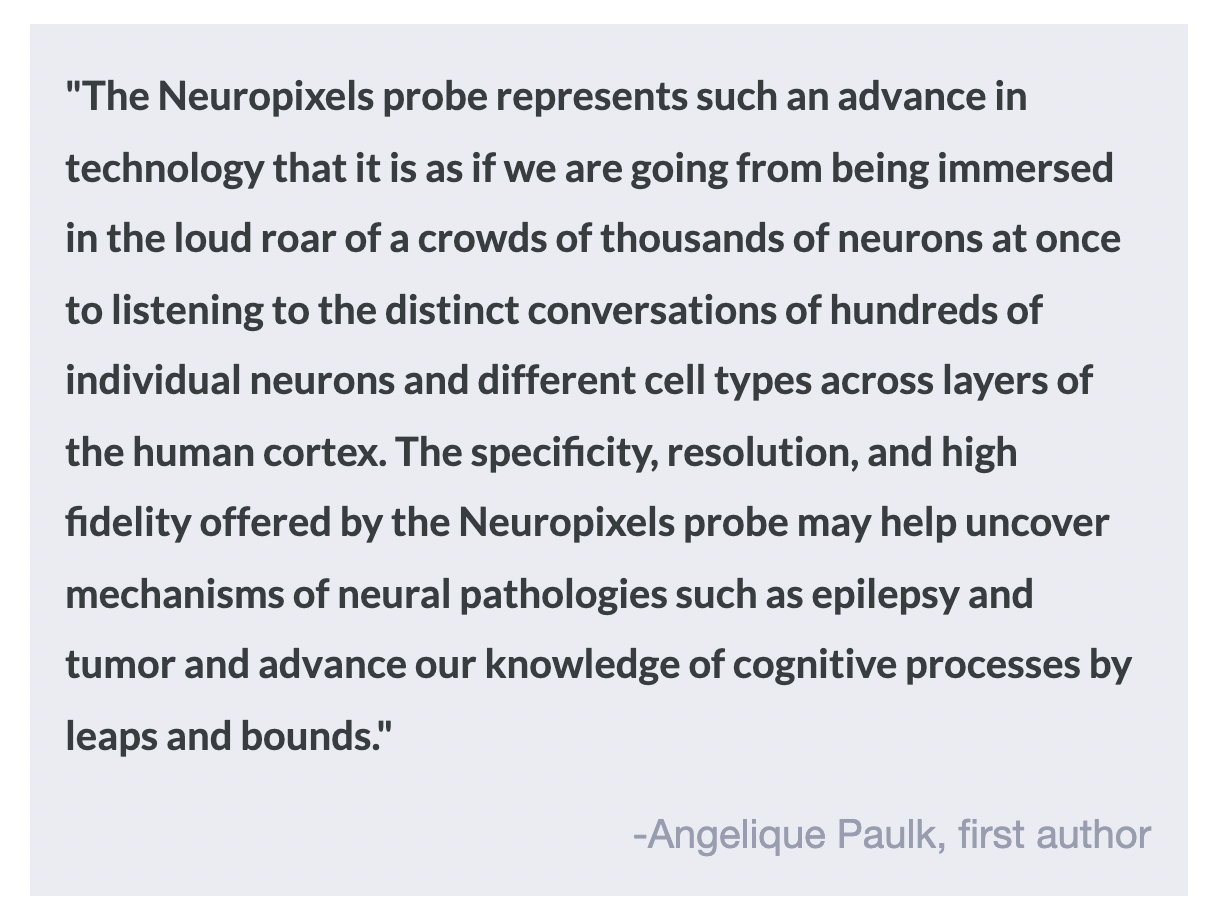The Use of Neuropixels Probes in Humans
Post by Megan McCullough
The takeaway
Neuropixels probes can successfully measure the electrical activity of many neurons at once with high resolution and specificity in humans.
What's the science?
Neuronal electrophysiology is the branch of neuroscience that focuses on the electrical properties of neurons through recording techniques that allow scientists to measure the flow of electricity through the brain. Current techniques used in humans allow researchers either to record only a few neurons per electrode or to measure the combined signal of thousands of neurons. In animal models, recent advances have allowed more specificity in the recording of large groups of neurons. This week in Nature Neuroscience, Paulk and colleagues translate these advances into human research by describing the use of Neuropixels probes to simultaneously record from over 200 individual neurons during neurosurgery in humans.
How did they do it?
Neuropixels probes, first introduced in 2017, is a silicon array of microelectrodes with microelectrode contacts spaced throughout. It differs from previously used probes primarily because of the high density of electrodes, allowing for more sensitive detection of individual cells. The authors used Neuropixels probes to record electrical activity in the outer layer of the temporal and frontal lobes in three individuals undergoing brain surgery to treat epilepsy or movement disorders. Since this technology was previously only used in animal research, the authors needed to adapt Neuropixels to be used in humans. The use of the original Neuropixels probe was found to be too fragile so the authors developed a thicker variant. They also needed to avoid excessively noisy recordings, and made adjustments to grounding and reference electrodes to carefully control for sources of external electrical noise (e.g. monitors) in a human operating room. These sources of noise would not have typically been present in an animal laboratory environment. Once data was collected, the authors classified the neurons based on waveform type to test the specificity and resolution of the electrical recordings.
What did they find?
The authors found that adapted Neuropixels probes were able to be used to record spiking activity from neuronal populations in the human cortex in a surgical setting. The authors observed electrical data from up to 200 individual neurons within minutes of inserting the probe – and some of these neurons could be observed via multiple different channels. Because of the closely spaced number of electrodes in the probe, the voltage of each cell generated during action potentials was able to be mapped and then classified. This illustrates that the use of Neuropixels probes can generate high-resolution electrical data previously not available in humans.
What's the impact?
This study is the first to outline techniques for using Neuropixels probes to record brain activity in humans. The use of Neuropixels probes enables high-quality recordings of action potentials from multiple neurons. High-resolution electrical data at the level of single neurons increases our understanding of both cognitive processes and neurological conditions. This research is imperative as it allows for future advancements in understanding the relationship between brain activity at the cellular level and cognitive function.


